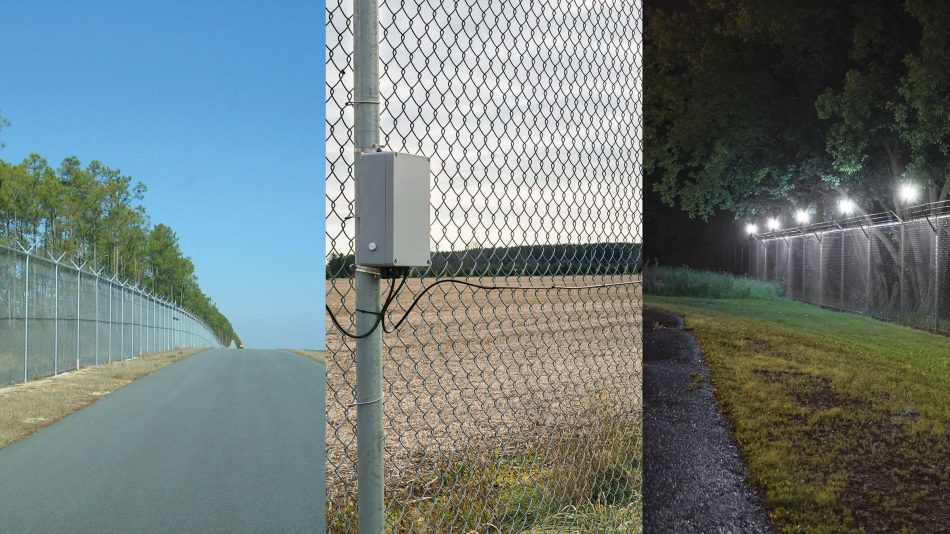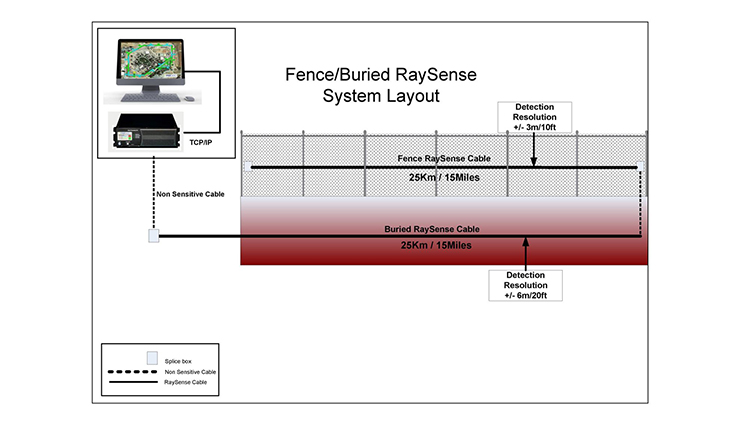The Advantages of a Fiber Optic Security System: Why It’s the Next Step of Secure Networks
The Advantages of a Fiber Optic Security System: Why It’s the Next Step of Secure Networks
Blog Article
Boost Your Safety With Advanced Fiber Optic Safety Equipments
In an era where protection is extremely important, sophisticated fiber optic safety systems present an engaging solution for enhancing safety across numerous atmospheres. These systems not just boast superior data transfer and rate for high-resolution surveillance but also supply amazing durability against outside interferences. As organizations progressively seek trustworthy ways to shield their properties, the integration of innovative modern technologies like AI and IoT within fiber optic structures raises essential inquiries concerning their efficiency compared to typical systems. What implications do these advancements hold for future security procedures?
Benefits of Fiber Optic Safety And Security
Using the advantages of fiber optic technology substantially enhances safety systems throughout numerous applications. Among the key advantages is the raised data transfer capacity, permitting for the transmission of huge amounts of information at high rates. This is especially important for real-time video monitoring, where high-resolution feeds can be sent without latency, guaranteeing immediate feedback capacities.
In addition, optical fiber display exceptional resistance to electro-magnetic interference, which is essential in atmospheres with possible signal disruptions. This integrity makes certain constant performance in crucial safety procedures. Fiber optic wires are less susceptible to touching and unapproved gain access to contrasted to typical copper circuitry, thereby improving information integrity and confidentiality.
One more remarkable advantage is the durability of fiber optic systems; they are extra resistant to environmental elements such as moisture, temperature level fluctuations, and destructive materials. This strength converts to reduce upkeep expenses and longer lifespans for protection setups.
Finally, the lightweight nature of fiber optic cable televisions promotes much easier installation and directing, especially in complex frameworks (fiber optic security system). Eventually, the combination of fiber optic technology into security systems not just reinforces protection measures yet likewise enhances operational efficiency
Key Features to Take Into Consideration
When examining fiber optic safety systems, several key functions must be considered to make sure ideal efficiency and efficiency. Initially, analyze the system's discovery range and level of sensitivity; an extensive range permits keeping track of big areas, while high sensitivity makes sure that also small disturbances are identified immediately.
Following, consider the assimilation capabilities of the system. A fiber optic protection system must flawlessly user interface with existing safety procedures such as electronic cameras and alarms, developing a cohesive safety network.
Resilience and environmental resistance are additionally important functions. Guarantee that the system is made to endure harsh weather problems and possible physical hazards, as this will certainly lengthen its operational life expectancy.

Finally, explore the scalability of the system. A durable fiber optic protection system ought to be easily expandable to accommodate future needs without considerable overhauls. By meticulously considering these features, you can choose a fiber optic safety and security remedy that enhances safety and safety in your setting.
Installment Process Introduction
To successfully implement a fiber optic security system, a methodical installment process is important. This procedure starts with a comprehensive site assessment to establish the specific safety demands and to determine ideal places for fiber optic wires and protection devices. Following this assessment, the installation group will certainly develop a detailed strategy, consisting of cord paths, necessary tools, and compliance with neighborhood laws.
Next, the installment entails laying the fiber optic cables, guaranteeing they are secured from ecological aspects and physical damages. Correct handling strategies are important, as fiber optic cable televisions are delicate and can be conveniently harmed. After the cabling is installed, ports and discontinuations are thoroughly finished to guarantee signal honesty.
The subsequent stage consists of installing safety and security devices such as electronic cameras, activity detectors, and alarm systems, all incorporated with the fiber optic network. Extensive screening is carried out to verify that all parts are operating appropriately and to guarantee optimal performance.

Comparing Fiber Optic to Traditional Solutions
The evolution of safety and security innovation has brought about considerable developments in the contrast between fiber optic systems and traditional copper-based systems. Fiber optic systems utilize light to transfer information, supplying remarkable data transfer and speed compared to their copper equivalents. This leads to enhanced data transmission capabilities, making optical fiber perfect for high-resolution video clip security and real-time surveillance.
Furthermore, fiber optic cables are resistant to electro-magnetic disturbance, minimizing the likelihood of signal degradation caused by outside elements. This particular makes certain consistent efficiency, even in challenging atmospheres. On official statement the other hand, typical copper systems are extra at risk to disturbance, bring about prospective my blog vulnerabilities in safety and security applications.
Durability is another benefit of fiber optic systems. They are much less susceptible to harm from environmental aspects such as dampness and temperature changes, which can jeopardize copper wiring. Furthermore, fiber optics are lighter and thinner, permitting simpler installment and decreased physical impact.
Nonetheless, traditional systems have a tendency to have lower initial costs, making them eye-catching for budget-conscious tasks. While fiber optic systems may need a greater in advance financial investment, their long-term advantages-- such as reduced upkeep prices and better integrity-- frequently surpass the initial expenditure, placing them as a superior choice for modern-day safety needs.
Future Fads in Security Modern Technology
Emerging fads in protection modern technology are positioned to change the landscape of surveillance and danger detection - fiber optic security system. As companies significantly deal with advanced hazards, technologies such as expert system (AI) and artificial intelligence (ML) are coming to be integral to safety and security systems. These modern technologies improve the capability of fiber optic systems by allowing real-time information analysis, recognizing abnormalities, and automating responses to potential breaches
Additionally, the assimilation of the Web of Points (IoT) is transforming protection structures. IoT tools can give comprehensive situational awareness and help with smooth communication in her response between different safety and security elements. This interconnectedness enables for more efficient surveillance and faster case action times.
Biometric verification is likewise acquiring momentum, offering a greater level of security through distinct physical features. As this modern technology evolves, it is likely to be included into fiber optic systems for enhanced accessibility control.
Final Thought
Finally, advanced fiber optic security systems represent a considerable innovation in security and surveillance technology. Their remarkable bandwidth, resistance to disturbance, and resilience facilitate reputable surveillance and data stability. As these systems incorporate AI and IoT capacities, they boost the total safety structure, guaranteeing robust security for properties. The change from typical systems to fiber optic remedies mirrors an expanding fad towards much more efficient and reliable safety measures in an increasingly complex technical landscape.
Report this page